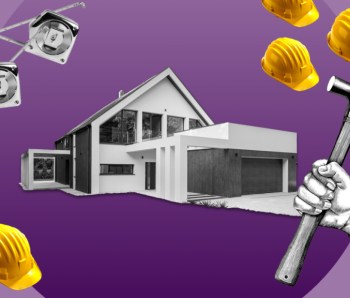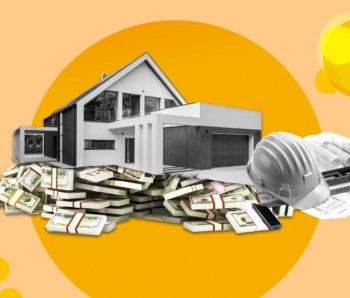From hurricanes and floods to earthquakes and wildfires, 2020 saw its fair share of natural disasters — and pretty damaging ones, too. According to tallies, damages clocked it at over $1 billion for at least 10 different events.
If your area wasn’t hit by a major catastrophe last year, you got lucky. But it doesn’t mean you’re safe from harm. In fact, according to the latest Catastrophe Report from CoreLogic, nearly a third of all U.S. homes are at high risk for natural disaster damage.
Want to make sure your home is protected in case the worst happens? Try one of these renovations:
More for Real Estate Enthusiasts
1. Storm shutters
Installing storm shutters can help protect your home from wind, hail, strong rains, flying items and the other various effects that come with natural disasters. There are several kinds of shutters you can install, including automatic, roll-down, accordion-style and full-panel options, which are put on with tracks or bolts.
If you’re concerned about aesthetics, you might think about colonial-style shutters, which offer a more traditional look, with a little extra protection.
2. Impact-resistant windows
If you want to take your window protections to another level, you can install fully impact-resident windows (sometimes just called “impact windows”). These windows are designed to withstand heavy winds and impact from flying debris, and they’re usually shatterproof, too.
In some areas, impact windows are actually required per local building codes (especially in very hurricane-prone areas), but if your home wasn’t built with them, they can easily be retrofitted. Each window costs anywhere from $90 to $400, depending on brand and quality.
3. Safe rooms
A safe room can be helpful if you’re in an area liable to tornadoes, hurricanes or other natural disasters. The rooms are typically steel-enforced spaces that withstand strong winds, storms and other threats. Underground is usually the best location for these, but you can choose elsewhere in the house if necessary. You can even purchase a prefabricated one to simplify things.
4. Stronger garage doors
The garage is your home’s single-biggest entry point. So a weak door? That can pose a major danger, paving the way for flooding, fire entry and more.
If your garage door isn’t up to snuff — or it has windows that can easily break or fail — you’ll want to consider upgrading to something sturdier. When you do, pay attention to the door’s wind load. If you’re in a hurricane or tornado-prone area, you’ll want one that withstands up to 140 miles-per-hour winds or higher. Choosing a door with a lock is also important.
Other options
If you’re not up to funding any major renovations at the moment, there are smaller changes you can make to reduce your risk in the event of a natural disaster. First, trim any low-hanging trees and remove dead or dying ones. Cleaning out your gutters can also help.
Finally, double-check your insurance policy. Make sure your dwelling coverage is enough to cover your home’s full replacement value, and pony up for loss of use coverage as well. If your home needs major repairs, this will cover the costs of staying in a hotel and other living expenses while the work is underway.











